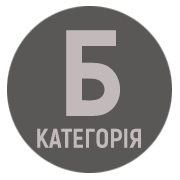Nominative field of the linguocultural concept TEXTILE in the English language
DOI:
https://doi.org/10.32782/2617-3921.2023.24.95-102Keywords:
concept, structure, component analysis, field model, nucleus, periphery.Abstract
The article is devoted to the study of the means of verbalisation of the cultural concept TEXTILE in the English language, the study of its nominative field. Conceptualisation as one of the main areas of cognitive research in linguistics focuses on the study of the concept as a key concept of linguoconceptology. One of the difficult issues in this area of linguistics is to determine the structure of the concept. In the research, the concept is considered as a structure represented by the nuclear and peripheral zones; its field model is defined be means of using the methods of etymological, definitional and component analyses. The research material was based on the English etymological dictionaries, general explanatory dictionaries of the English language and special dictionaries of textile terminology. The lexical meaning of the English lexeme textile has undergone significant changes due to the historical development of the textile industry and the corresponding expansion of human knowledge, which affected the volume of the concept structure. The nuclear zone of the concept under examination is represented by three groups of nominal units, namely: material, process and result. The nuclear zone includes lexemes that are terminological units of the textile industry. The MATERIAL group is represented by the following lexemes: fibre, filament and yarn, the PROCESS group by weaving, knitting, staple, nonwoven, manufactured, felted, crocheted and spinnable, the RESULT group by cloth, fabric, garment, lace, embroidery, rug and waste. The peripheral zone of the nominal field of the concept is divided into the near and far periphery. The zone of the near periphery is represented by non-terminological lexemes related to the key lexeme on the basis of such semantic components as crossing threads and nonwoven. Among them, the following lexical units are singled out: contexture, intertexture, net, web, tissue, canvas, material, fibre, filament, yarn, cotton, bolt, thread, substance. The far periphery is represented by metaphors formed on the basis of similarity of action and phraseological units, for example, peaceweaver, fate-weaver, word-weaver.
References
Джеріх О. С. «Концепт» у сучасній когнітивній лінгвістиці та лінгвокультурології: поняття та структура. Типологія мовних значень у діахронічному та зіставному аспектах. 2018. Випуск 35–36. С. 61–68.
Ковальова К. О. Мотивуючі ознаки лінгвокультурологічного концепта TEXTILE в англійській мові. Записки з романо-германської філології. 2022. Випуск 1 (48). С. 33–40.
Плотнікова Н. Алгоритм аналізу лінгвокультурного концепту. Studia Ukrainica Posnaniensia. 2013. Випуск 1. С. 165–170.
Полюжин М. М. Поняття, концепт та й ого структура. Науковий вісник Східноєвропей ського національного університету імені Лесі Украї нки. 2015. Вип. 4. С. 214–224.
Селіванова О. О. Актуальні напрями сучасної лінгвістики. К., 1999. 148 с.
Селіванова О. О. Сучасна лінгвістика: напрями та проблеми: Підручник. Полтава: Довкілля-К, 2008. 712 с.
Словник української мови: в 11 томах. Том 10, 1979.
Lakoff G., Johnson M. Metaphors We Live By. Chicago: University of Chicago Press. 1980. 242 p.
Cambridge Dictionary URL: https://dictionary.cambridge.org/
Collins Online Dictionary URL: https://www.collinsdictionary.com/
Dictionary of Fiber and Textile Technology. Kosa, 7th edition, 1999. 258 p.
Longman Dictionary of Contemporary English URL: https://www.ldoceonline.com/
Louis Harmuth Dictionary of Textiles. Fairchild publishing company,
New York, 1915. 175 p.
Online Oxford dictionary URL: https://www.oxfordlearnersdictionaries.com/
Webster’s Dictionary URL: https://www.merriam-webster.com



